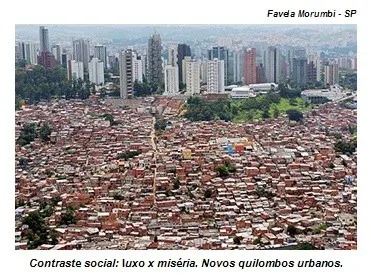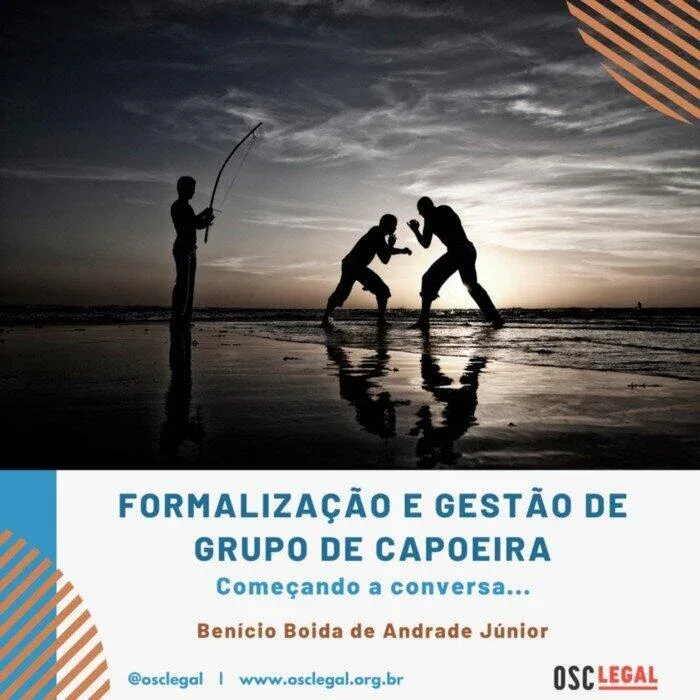Rio de Janeiro: A roda do Cais de Valongo
O cais do Valongo situa-se na zona portuária do Rio de Janeiro e desde sempre manteve uma relação com a cultura afro-brasileira, seja pelo fato de ter sido um entreposto de escravos no Rio ou por ter sido frequentada por capoeiristas, babalorixás e yalorixás, sambistas e outros personagens da cultura popular carioca. O cais do Valongo ele próprio sofreu alterações urbanas ao longo do tempo, como em 1893 quando foi alargado para receber a imperatriz que casaria com D.Pedro II e chamado de Cais da Imperatriz.
A roda do Cais de Valongo foi idealizada por Carlo Alexandre Teixeira da Silva, conhecido na capoeiragem como Mestre Carlão. O Mestre começou o seu trajeto na capoeira Angola nos anos 80 e fez parte de uma geração de capoeiristas no Rio que participou na revitalização da capoeira Angola, mas também, na sua difusão para fora do Brasil. Mestre Carlão residiu em Londres, idealizou alguns espetáculos de teatro com performatizações híbridas entre o teatro e a Capoeira Angola, mas também organizou um dos mais importantes eventos da capoeira londrina, o Movement for change.
De retorno ao Brasil para residir novamente no Rio, consta que Mestre Carlão foi dar aulas próximo ao Cais do Valongo e deu se conta da importância do lugar e da necessidade de criar a volta daquele espaço simbólico um movimento. As rodas do Cais do Valongo têm um carácter temático, tendo sido a primeira dedicada a Prata Preta, líder negro contra a revolta da vacina. A roda também é frequentada e conta com a intervenção de personalidades importantes que pensam a capoeira, a cultura negra e a cidade do Rio como o jornalista Décio Teobaldo e o historiador Mathias Assunção. A ideia central da roda, na compressão do Mestre Carlão, é “ocupar os espaços públicos e históricos para fincar o pé nos locais que estão cada vez mais controlados”. Segundo o mestre existe um “choque de ordem” na ocupação dos espaços públicos em que os gestores municipais criaram regras estritas de utilização que limitam a ação dos agentes da cultura popular na rua. Na perspetiva do Mestre Carlão e de outros agitadores culturais da capoeira carioca, a área do Cais do Valongo tem sido muito visada pela especulação e os investidores, seja por seu carácter histórico e o valor do solo urbano, mas sobretudo pelos avultados investimentos que ali se pretendem fazer. Para além da roda, outros grupos tem feito na praça as suas intervenções como grupos de Jongo, o bloco carnavalesco Prata Preta e inclusive grupos indígenas.
É importante perceber que essa intervenção dos capoeiristas em parte tem um carácter de reforço cultural da atividade, ocupando e intervindo nos espaços público, fazendo notar-se como uma atividade que é popular e que esta em diálogo com os grupos sociais que ocupam a urbe carioca. Mas tem também e principalmente um carácter político e militante em favor da cidade, do direito de manifestar-se nela através da cultura e opondo-se a qualquer forma de elistismo e segregação socio-espacial que os poderes públicos pensem em instituir. Perceba-se também que a roda do Cais do Valongo trás uma proposta de ação para a capoeira Angola no Rio de janeiro. Para além da roda em si, há um tema, ocorrem palestras e podem eventualmente ocorrer intervenções de outras ordens, dentro do contexto de organização da roda. No decorrer dessa proposta outos líderes de grupos também dinamizaram as suas rodas na rua, construindo um movimento espontâneo, mas que vibrava a partir de um sentimento comum de intervir na cidade e engajar a Capoeira Angola numa ação conjunta e assim criou-se a Conexão Carioca de Rodas na Rua, como uma iniciativa dos capoeiritas de integrar as rodas já existentes na rua num mesmo fim. Os grupos envolvidos nessa iniciativa são: Grupo Volta ao Mundo – M. Cláudio (Roda na Praça São Salvador, Laranjeiras); Grupo Kabula Rio – M. Carlão, CM. Leandro, Treinel Fátima (Roda do Cais do Valongo); Grupo Ypiranga de Pastinha – M. Manoel (Roda na Cinelândia, Centro); Grupo Aluandê – C.M Célio (Roda da Feira do Lavradio, Rua do Lavradio); Grupo Valongo – Treinel Maicol e Pedro Rolo e Roda da Praça XV com Prof. Fábio-Pezão do Instituto Uka – Casa dos Saberes Ancestrais.
A roda do cais do Valongo está para continuar. Para além do ritual da capoeira angola e da mandinga e teatralidade dos seus jogadores, a roda do Cais do Valongo é um casamento de várias intervenções artísticas. Já foram produzidos vídeos, realizadas palestras, experimentações fotográficas em que se destaca o trabalho da fotógrafa Maria Puppim Buzanovsky e estão marcadas outras intervenções.
O Rio pulsa e reflete sobe si mesmo na roda do Cais do Valongo.
Ricardo Nascimento
Geógrafo – Doutorando em Antropologia pela Universidade Nova de Lisboa
Rodas de Capoeira and the Public Art Movement
Rio de Janeiro has always been a city known for its unique beauty, home of cheerful and welcoming people. But now, in addition to the natural beauty and the typical brazilian kindness, we also want to show that our culture, specifically the popular one, still has a value which is not yet known to the public, national and international, to their fullest potential, artistic, cultural, philosophical and historical. The cultural movement known as “Conexão Carioca de Rodas na Rua” (Carioca Connection of Rodas held on the Street) for almost one year, has developed an innovative proposal which includes 7 groups of Capoeira Angola, promoting a series of Rodas and presentations in public spaces in Rio, with the aim of showing that the culture of Brazil surpasses and does not accept the stereotype and cliché in which we were placed over the centuries, the one which still imagines a Brazil made of beach, forest, football and a carnival that lasts 365 days. Besides the “Rodas” we have been doing lectures, film recording and photography shoots in order to bring awareness, political consciousness and critical thinking about the Afrobrazilian history and so. The big events that are coming to Brazil has created an ideal environment to transform many of such misconceptions about us. Well, the time has come for the people of Brazil show that its value goes far beyond the labels created by propaganda and prejudice. The opportunity to deconstruct the grotesque and reinvent what has always existed is knocking at our door and we do not intend to waste it once again. The Public Art and its protagonists, now has the determination and the voice of thousands of artists and thinkers to say what we think, what we do and how we want to do. Come and learn about this Cultural Movement that is giving the example of how to organize, gain attention, respect, visibility and attract the public. The rodas has returned to the street to stay! So, come to Rio de Janeiro to meet and participate in this cultural and political action!
{vimeo}61771318{/vimeo}
- See all the videos of the Cais do Valongo Roda / “Conexão Carioca”, which been made in order to promote awareness and disseminate our ideas and actions: 7th Roda do Cais do Valongo – https://vimeo.com/user12575042Photos by Maria Buzanovsky
In September 2012, invited by Master Carlão, I began my photographic shootings of the “Cais do Valongo Roda”, but my initial contact with Capoeira and the group Kabula is older, having been a student of Contramestre Leandro Bicicleta. From the first photo session in that Roda, the main goal was to show intimate moments which could reveal the ritual of Capoeira Roda, its movement and body language of the players or the details of the berimbau and also the other percussion instruments. It has been privileged with absolute focus, a look from the inside the game itself, which I got through my experience within the world of Capoeira as a practitioner and scholar of the history of this cultural manifestation.
I believe that the difference in my work, in addition to the plasticity and beauty inherent in all aspects involved in the ritual, and the game of Capoeira Roda portrayed, is concentrated in special moments and angles which I use for these photos.
It is precisely the perspective from the heart of the Roda that attracts both the general public, as well as the protagonists themselves, when they see themselves in the photographs and the signs of their culture, such as the berimbau and the “atabaque” (capoeira traditional drum), the “chamada de Angola” step or a beautiful “rasteira”. Thus, they identify temselves with the images because they feel a portion of their most private emotions portrayed out of their bodies. I believe this is due to the great success that, to my surprise, the photos reached on social networks, through which I have been receiving affectionate messages from capoeiristas from around the world, who appreciate my work.
Beyond the ritual of Capoeira Angola, from “mandinga” and theatrics of its players, the idea is to provide the combination of various artistic actions and interventions. In addition to the photographic shootings it has been produced videos and lectures with the participation of scholars and artists who think capoeira, the black culture and the city of Rio de Janeiro. The aim is therefore to stimulate greater insight into Capoeira, as a Brazilian Intangible Cultural Heritage, broadcasting its ritualistic aspect, it recognition as an important part of the history of Brazil and african-Brazilian cultural heritage and above all, lead to reflection on its role and political action in the present.
Maria Buzanovsky
siga os clipes das Rodas do Cais do Valongo | follow the Roda do Valongo teasers
7a Roda do Cais do Valongo
6a Roda do Cais do Valongo
5a Roda do Cais do Valongo
Carlo Alexandre
Kabula Rio & London
Diretor Artístico / Mestre de Capoeira Angola
web: www.kabula.org
Cel. 21 7948.7969 tim |
Skype: carloalexkabula1






